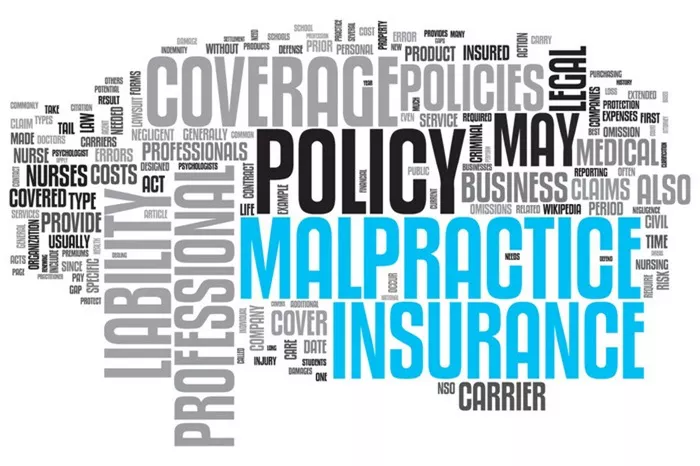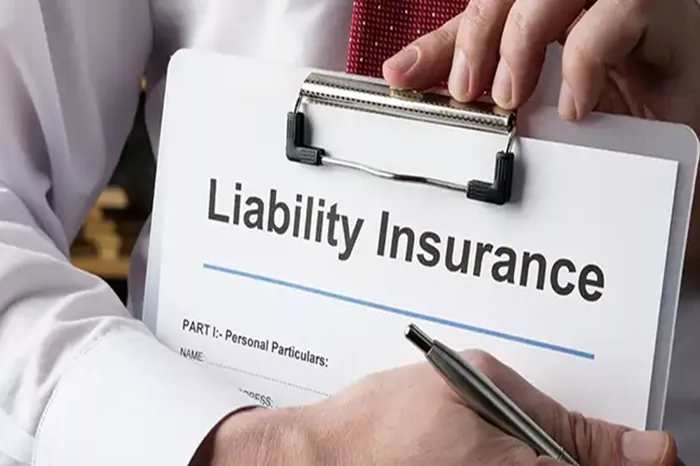In the realm of business insurance, two terms frequently arise, often causing confusion among professionals and business owners: Professional Liability Insurance and Errors and Omissions (E&O) Insurance. These terms are sometimes used interchangeably, leading many to wonder if they indeed refer to the same type of coverage. This article aims to clarify the distinctions and similarities between Professional Liability Insurance and E&O Insurance, providing a comprehensive understanding of their purposes, coverage, and importance in various industries.
Understanding Professional Liability Insurance
Professional Liability Insurance, also known as Professional Indemnity Insurance, is designed to protect professionals against claims of negligence, errors, or omissions in the services they provide. This type of insurance is essential for individuals and businesses that offer expert advice or services, such as consultants, accountants, architects, engineers, and healthcare professionals. The primary goal of Professional Liability Insurance is to cover legal defense costs and any settlements or judgments that may arise from claims of professional misconduct or negligence.
Unlike general liability insurance, which covers bodily injury and property damage, Professional Liability Insurance focuses on financial losses suffered by clients due to the professional’s actions or inactions. It provides coverage for a wide range of potential issues, including:
Misrepresentation
Professional negligence
Breach of duty
Errors and omissions
Defamation
Infringement of intellectual property rights
Errors and Omissions (E&O) Insurance Explained
Errors and Omissions (E&O) Insurance is a specific type of Professional Liability Insurance. It is tailored to protect businesses and professionals who provide advice, services, or products that could result in financial loss to their clients if not executed correctly. E&O Insurance is particularly relevant for professions where mistakes or oversights can lead to significant financial repercussions for clients, such as real estate agents, insurance brokers, financial advisors, and IT consultants.
E&O Insurance covers similar claims as Professional Liability Insurance, including negligence, errors, and omissions. However, it is often customized to address the unique risks associated with specific industries. For example, an IT consultant’s E&O policy might include coverage for data breaches, while a real estate agent’s policy might focus on misrepresentations related to property transactions.
Key Similarities Between Professional Liability and E&O Insurance
Both Professional Liability Insurance and E&O Insurance aim to protect professionals from claims arising from their services. Here are some key similarities:
Coverage for Negligence
Both types of insurance provide coverage for claims of negligence, errors, or omissions that result in financial losses for clients.
Legal Defense Costs
Both policies cover legal defense costs, including attorney fees, court costs, and settlements or judgments.
Claims-Made Basis
Professional Liability and E&O Insurance are typically offered on a claims-made basis, meaning the policy must be in effect when the claim is made, regardless of when the incident occurred.
Industry-Specific Policies
Both types of insurance can be tailored to meet the unique needs and risks of specific industries.
Differences Between Professional Liability and E&O Insurance
While Professional Liability and E&O Insurance share many similarities, there are notable differences that set them apart:
Scope of Coverage
Professional Liability Insurance is a broader term that encompasses various types of liability coverages, including E&O Insurance. E&O Insurance, on the other hand, is a specific subset of Professional Liability Insurance focused on errors and omissions.
Industry Focus
Professional Liability Insurance is often associated with regulated professions such as healthcare, law, and engineering. E&O Insurance, however, is more commonly linked to service-oriented industries like real estate, insurance, and consulting.
Policy Customization
E&O Insurance policies are often highly customized to address the specific risks of a particular industry or profession. While Professional Liability Insurance can also be customized, it generally provides broader coverage that may not be as tailored as an E&O policy.
Terminology and Usage
The terminology used to describe these insurance types can vary by region and industry. In some cases, the terms are used interchangeably, while in others, they denote distinct types of coverage.
Importance of Professional Liability and E&O Insurance
Understanding the distinctions between Professional Liability and E&O Insurance is crucial for professionals and businesses to ensure they have adequate coverage for their specific risks. Here are some reasons why these types of insurance are essential:
Protecting Against Financial Losses
Both Professional Liability and E&O Insurance protect professionals and businesses from significant financial losses due to claims of negligence, errors, or omissions. Without this coverage, a single lawsuit could lead to substantial financial hardship or even bankruptcy.
Maintaining Professional Reputation
Being insured demonstrates a commitment to professional responsibility and client protection. This can enhance a professional’s reputation and credibility, reassuring clients that they are working with a responsible and trustworthy individual or business.
Compliance with Industry Standards
In many industries, having Professional Liability or E&O Insurance is a requirement to obtain licenses, certifications, or contracts. This ensures that professionals adhere to industry standards and are financially capable of addressing potential claims.
Risk Management
Professional Liability and E&O Insurance provide a safety net that allows professionals to focus on their work without constantly fearing the financial repercussions of potential mistakes. This can lead to improved performance and client satisfaction.
See Also: Best Teacher Liability Insurance
Factors to Consider When Choosing Coverage
When selecting between Professional Liability and E&O Insurance, professionals and business owners should consider several factors to ensure they obtain the most appropriate coverage:
Industry and Profession
Evaluate the specific risks associated with your industry and profession. Determine whether a general Professional Liability policy or a more specialized E&O policy is more suitable for your needs.
Policy Limits
Review the policy limits to ensure they are adequate to cover potential claims. Consider the size of your business, the value of your contracts, and the potential financial impact of a claim.
Claims History
Assess your claims history and the frequency of potential claims in your industry. This can help determine the level of coverage needed and any additional endorsements that may be necessary.
Policy Exclusions
Carefully review the policy exclusions to understand what is not covered. Ensure that any specific risks relevant to your profession are included in the policy.
Cost of Coverage
Compare the cost of different policies and weigh them against the coverage provided. While it may be tempting to choose a cheaper policy, it is essential to ensure that it adequately covers your risks.
Case Studies: Real-World Examples
To illustrate the importance and application of Professional Liability and E&O Insurance, let’s examine a few real-world examples:
Case Study 1: Architect’s Professional Liability Insurance
An architect designed a commercial building that, upon completion, exhibited structural issues due to an oversight in the design process. The building owner sued the architect for negligence, seeking compensation for the cost of repairs and lost revenue during the downtime. The architect’s Professional Liability Insurance covered the legal defense costs and the settlement, ensuring the architect did not face financial ruin.
Case Study 2: IT Consultant’s E&O Insurance
An IT consultant was hired to implement a new software system for a client. Due to a coding error, the software malfunctioned, causing significant disruptions to the client’s operations and financial losses. The client filed a lawsuit against the consultant for the error. The consultant’s E&O Insurance policy covered the legal fees and the settlement amount, protecting the consultant’s business and reputation.
Case Study 3: Real Estate Agent’s E&O Insurance
A real estate agent misrepresented the zoning regulations of a property, leading a buyer to believe it could be used for commercial purposes. After the purchase, the buyer discovered the property was zoned strictly for residential use and sued the agent for the misrepresentation. The agent’s E&O Insurance policy covered the legal costs and the settlement, preventing a severe financial impact on the agent’s business.
The Claims Process for Professional Liability and E&O Insurance
Understanding the claims process for Professional Liability and E&O Insurance is essential for policyholders to ensure they can effectively navigate it when needed:
Notification of Claim
When a claim or potential claim arises, the policyholder must notify their insurance provider promptly. This notification should include details of the incident, the parties involved, and any legal documents received.
Investigation
The insurance provider will conduct an investigation to determine the validity of the claim. This may involve reviewing documents, interviewing witnesses, and consulting with experts.
Legal Defense
If the claim is deemed valid, the insurance provider will appoint legal counsel to defend the policyholder. The provider will cover the legal defense costs, including attorney fees and court costs.
Settlement Negotiation
If the claim proceeds to settlement negotiations, the insurance provider will work to reach a fair settlement with the claimant. The policyholder’s consent may be required for settlement agreements.
Claim Resolution
Once a settlement is reached or a judgment is made, the insurance provider will pay the agreed-upon amount, up to the policy limits. The policyholder may be responsible for any amounts exceeding the policy limits.
Conclusion
Professional Liability Insurance and Errors and Omissions (E&O) Insurance are essential tools for professionals and businesses to protect themselves against claims of negligence, errors, or omissions in their services. While they share many similarities, understanding the differences between them is crucial for selecting the appropriate coverage for your specific needs. By carefully evaluating your industry, profession, and potential risks, you can ensure that you have the right insurance in place to safeguard your financial stability and professional reputation.
Investing in Professional Liability or E&O Insurance is not just about compliance or risk management; it is about demonstrating a commitment to excellence and accountability in your professional endeavors. In an increasingly litigious society, having the right insurance coverage can make the difference between a thriving business and one that is crippled by legal disputes. As such, professionals and business owners should prioritize securing the appropriate coverage to protect their interests and ensure long-term success.






















